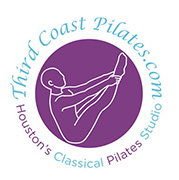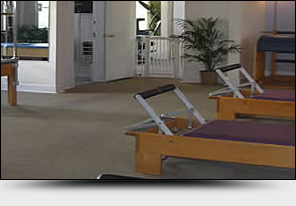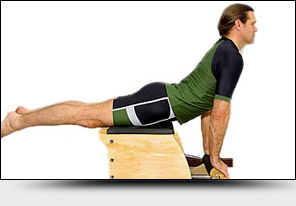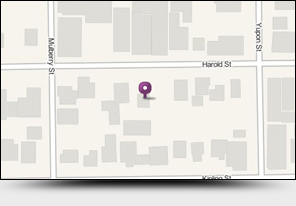The Pilates Method of physical and mental conditioning incorporates the postures and breath work of yoga, the focused concentration of Zen meditation and the calisthenics of ancient Greek and Roman exercise regimens. 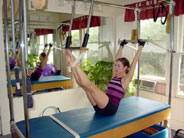 Joseph Pilates considered the area of the torso between the lower ribs and the hips the "Powerhouse" or center of the body. This corset of muscles forms the foundation for all Pilates movements. A strong Powerhouse aligns and stabilizes the pelvis and lumbar vertebrae, giving the practitioner a significant increase in strength and control over all movements. This in turn improves performance, posture, poise, grace and balance.
Joseph Pilates considered the area of the torso between the lower ribs and the hips the "Powerhouse" or center of the body. This corset of muscles forms the foundation for all Pilates movements. A strong Powerhouse aligns and stabilizes the pelvis and lumbar vertebrae, giving the practitioner a significant increase in strength and control over all movements. This in turn improves performance, posture, poise, grace and balance.
The importance of coordinating proper breathing with movement cannot be overstated. It is 50% of the Pilates method. When you breathe properly, filling and emptying the lungs completely, you have more stamina, feel more alive and alert, and are better able to concentrate. The precise breathing patterns assigned to each exercise serve to assist in the contraction of the intrinsic (core) muscles of the Powerhouse and regulate the tempo and rhythm of the Pilates exercises.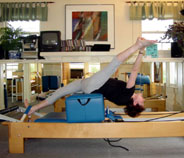
There are thirty-four floor exercises that make up the Mat work. These exercises are based on Yoga and indeed you will perform all of the Pilates floor exercises in your study of yoga. There are 500 exercises for the machines Joseph Pilates designed. These machines use springs of varying strength to provide the resistance necessary to increase the density (strength) of muscle, bone and connective tissue. Each spring also provides a variable resistance that increases with leverage. This allows the practitioner to perform the exercises through a full range of motion (flexibility) without causing injury to the joints. This emphasis on full range of motion with increasing resistance is the primary reason that the Pilates method lengthens the muscles as it strengthens them.
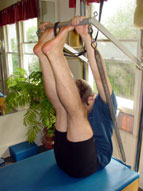 Joseph Pilates called his system "Contrology" and required his students to perform controlled, precise movements in a flowing style. He understood the biomechanical advantages of improving posture to gain leverage and placed equal emphasis on strength and flexibility to improve function (physical). He created exercises to improve coordination (mental) and balancing exercises that required a state of calm under stress (emotional). He encouraged the perseverance (spirit) to flow from exercise to exercise without stopping to rest, thus experiencing the benefits of muscular endurance and moderate aerobic activity. This holistic approach to exercise results in significant weight loss, a long, lean body, with a flatter stomach and lifted buttocks, improved posture and an increase in cardiovascular health. This approach also develops the ability to perform any activity in a graceful and fluid manner with a minimum of effort.
Joseph Pilates called his system "Contrology" and required his students to perform controlled, precise movements in a flowing style. He understood the biomechanical advantages of improving posture to gain leverage and placed equal emphasis on strength and flexibility to improve function (physical). He created exercises to improve coordination (mental) and balancing exercises that required a state of calm under stress (emotional). He encouraged the perseverance (spirit) to flow from exercise to exercise without stopping to rest, thus experiencing the benefits of muscular endurance and moderate aerobic activity. This holistic approach to exercise results in significant weight loss, a long, lean body, with a flatter stomach and lifted buttocks, improved posture and an increase in cardiovascular health. This approach also develops the ability to perform any activity in a graceful and fluid manner with a minimum of effort.
"Contrology is complete coordination of mind, body and spirit..." -Joseph Pilates
